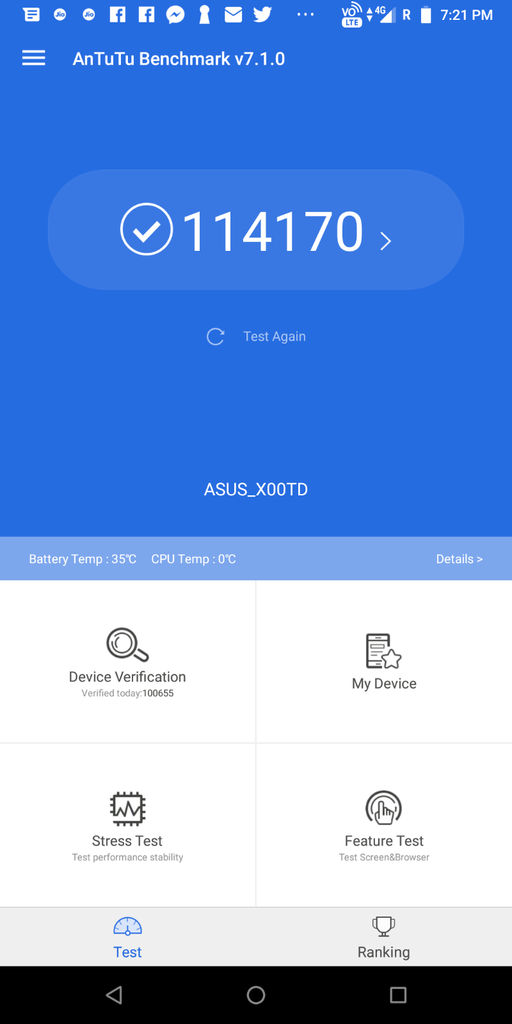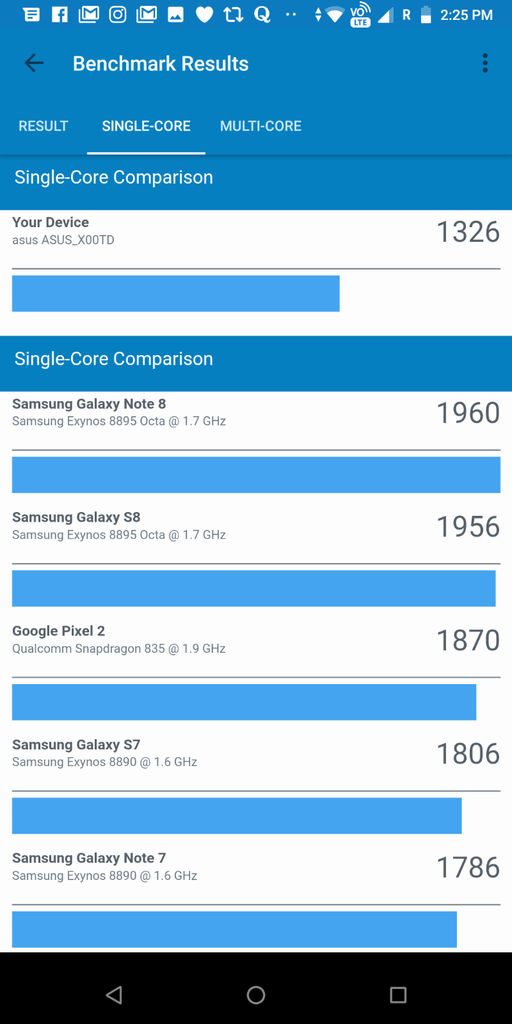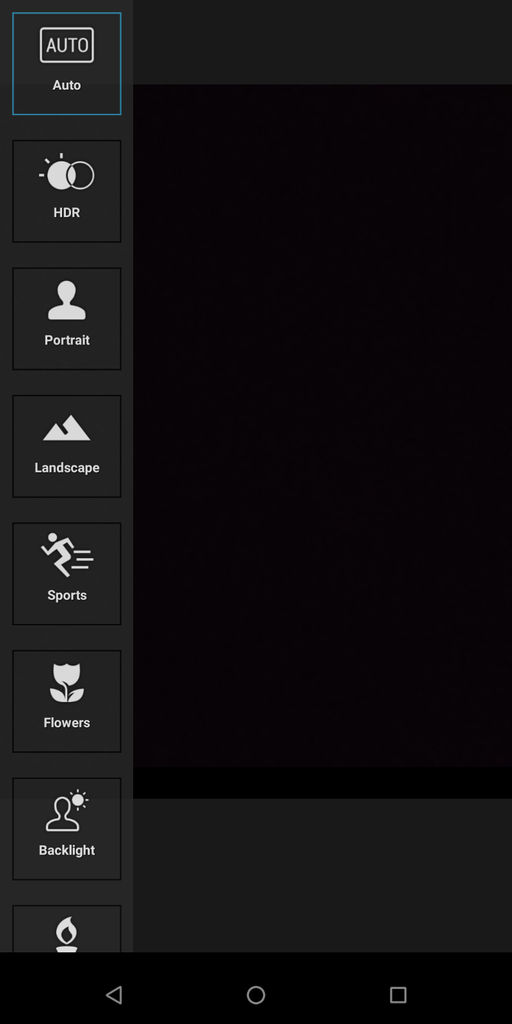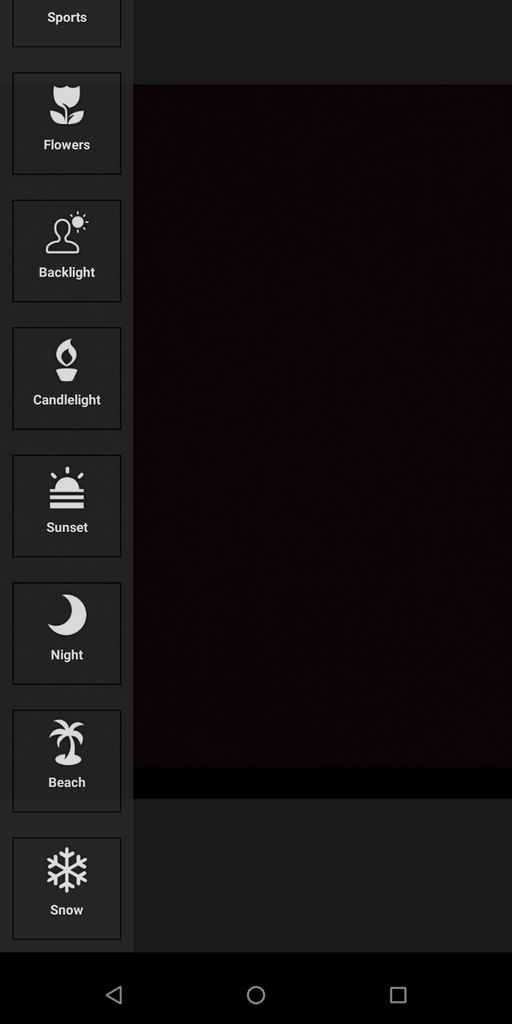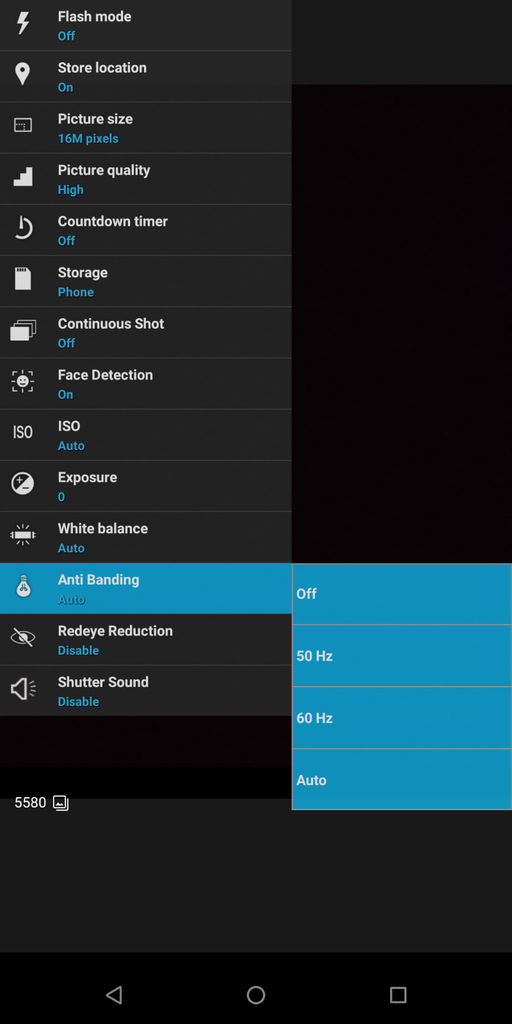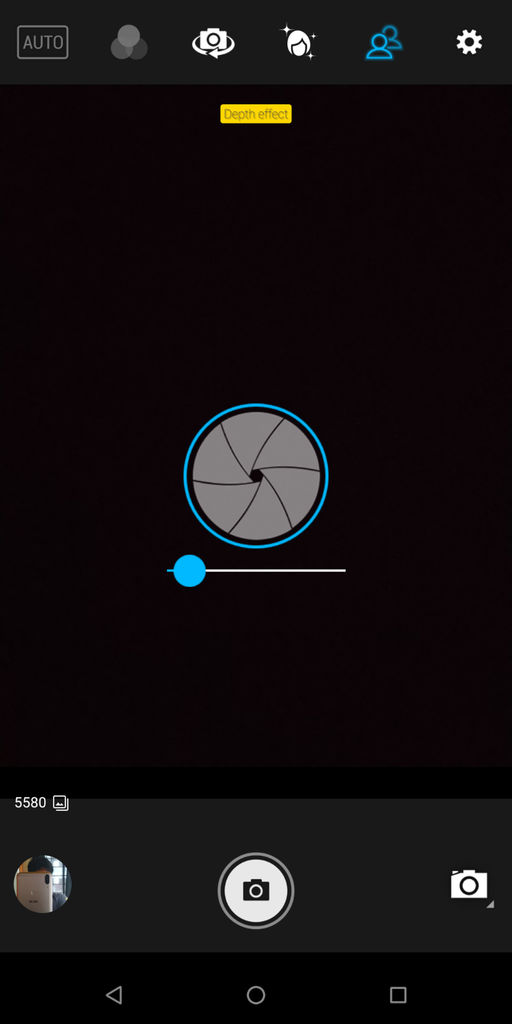
It was just a few months ago that ASUS India pulled the proverbial rabbit out of their hat and launched the Zenfone Max Pro (M1) here in India. The handset was initially available in two versions – a base 3GB RAM +32GB version and a pricier 4GB RAM + 64GB variant. The phone mostly received positive reviews and was seen as a viable alternative to the Redmi Note 5 and the Redmi Note 5 Pro. At the time of the launch, ASUS had also confirmed that they would launch a pricier 6GB RAM version of the Max Pro with an upgraded front and rear camera. True to their promise, the 6GB version of the handset officially went on sale a few weeks ago.
ASUS Zenfone Max Pro (M1) 6GB
Rs. 14,999What Is Good?
- Slight performance increase over the older model
- Value for money
- Stock Android
- Decent Camera
- Best Performer under Rs. 15,000
What Is Bad?
- Camera still a notch below the Redmi Note 5
I have been using this top-of-the-line model for quite some time now. Let us see if the RAM and camera upgrade is really worth the extra money you pay for it. The handset is otherwise identical in all respects to the other two versions. Since we have already reviewed the 3GB/32GB version of the handset, in this review we will only look at the improved camera and the performance aspects of the device.
ASUS Zenfone Max Pro (M1) 6GB Review : Performance

The last time I used the Zenfone Max Pro was in late April when I had the 3GB version of the handset with me. I cannot, therefore, compare the performance difference between the two handsets immediately since I do not have them together. However, in most real-life situations, I did not notice a major performance difference between the two. Even our benchmark scores were near identical with the 6GB version managing to score slightly more thanks to the added firepower. For example, while the 3GB version scored 111957 points in the AnTuTu benchmark, the 6GB version managed to score a slightly higher score of 114170 points. We also ran Geekbench on both the handsets and came up with more or less the same results. The 6GB version ended up with a multi-core score of 4889 (compared to 4471 on the 3GB version) and a single core score of 1326 (compared to 1298 on the 3GB version).
The higher amount of RAM meant that I was able to run more apps in the background than the 3GB version. However, this should not be a major concern for most people. One issue I had with the 3GB version was the occasional lag that I faced with the unit whilst using WhatsApp. That issue never occurred on the 6GB version. However, it is also pertinent to note that I was using an early firmware on the 3GB version. Overall, the Zenfone Max Pro (M1) is currently one of the fastest budget smartphones you can buy.
ASUS Zenfone Max Pro (M1) 6GB Review: Camera, Imaging Performance

As outlined earlier in this review, the additional RAM and the upgraded camera are the only changes that the new 6GB version gets. ASUS has not revealed the camera sensors that either of the versions sport. However, looking at the camera specs, it seems like the 6GB version does get a different primary rear sensor and a better front sensor. The megapixel count has been bumped from 13-megapixel on the 3GB/4GB versions to 16-megapixel on the 6GB version with an increase in aperture from f/2.2 on the former to f/2.0 on the latter. The secondary rear camera is the same 5-megapixel unit. As for the front camera, this unit also gets an upgrade and is now a 16-megapixel f/2.4 fixed-focus sensor compared to the 8-megapixel sensor seen on the 3GB/4GB versions.
The camera app used by the 6GB version of the handset is identical to the 3GB/4GB version of the handset and is pretty easy to use. I was not, however, a fan of the UI design which feels a tad dated. Even ASUS’ own ZenUI camera app looks and feels better. The camera app was great, however, functionality-wise and the option to change the camera mode was easy to find and use. Here are a few screenshots of the camera app. Note that unlike its elder sibling, the Zenfone 5Z that can independently use its secondary camera with a wide-angle lens, the Zenfone Max Pro’s 5-megapixel secondary rear camera cannot be independently used.
Image Quality
Please note that during this review, I was not in a position to compare the image quality between the 3GB/4GB version and the 6GB version as I only had the latter with me. First impressions, however, is that there seems to be a marginal improvement. I started off by clicking a series of daylight shots that in my option ended up with decent dynamic range. The larger 16-megapixel sensor also meant that the camera was able to capture more details. I switched to the HDR mode just to check if there is an improvement in dynamic range. To my surprise in the images shown below, it is noticeable that prove that in the HDR mode, the image ended up with natural-looking colours and improved dynamic range.
I also captured a bunch of typical HDR-ish images and the images were usable. Details, however, were lacking.
The Zenfone Max Pro (M1) 6GB while not the quickest around has one of the faster autofocus speeds I have seen on a handset in its price range. There is a dedicated close-up mode within the camera app that can be used for macro shots and flowers. Some of the initial images I captured in the auto mode were not very usable and ended up with a weird pigmentation on the edges of the flowers. That said, lighting conditions weren’t optimal at the time thanks to the ongoing monsoon. In low light situations, the handset is unable to capture the details. This is not really a major drawback considering the price at which the phone retails. You will also need a steady pair of hands to ensure you do not end up with a blurry image in well-lit conditions at night.
Both the front and rear cameras support portrait modes and there was a marginal improvement in the edge detection as far as the rear camera is concerned. The larger megapixel count on the front camera meant that it was able to capture more details. However, selfies in a bright background will lead to overexposed images. The portrait mode is rather confusing on the Zenfone Max Pro. There is a dedicated portrait mode option within the camera mode options as well as a separate depth effect option within the quick access settings. In the selfie camera mode, the choosing the depth effect option turns the portrait mode on automatically. Background blur was achieved in the portrait mode however, edge detection wasn’t up to the mark. You are also able to change the aperture in the depth effect mode in the rear camera.
I was not able to compare the handset with the current camera king of this segment the Redmi Note 5 Pro. However, going by our earlier review, the Zenfone Max Pro (M1) even with its improved camera is still a notch below the Redmi Note 5 Pro as far as the imaging department is concerned.
ASUS Zenfone Max Pro (M1) 6GB Review: Should You Buy It?
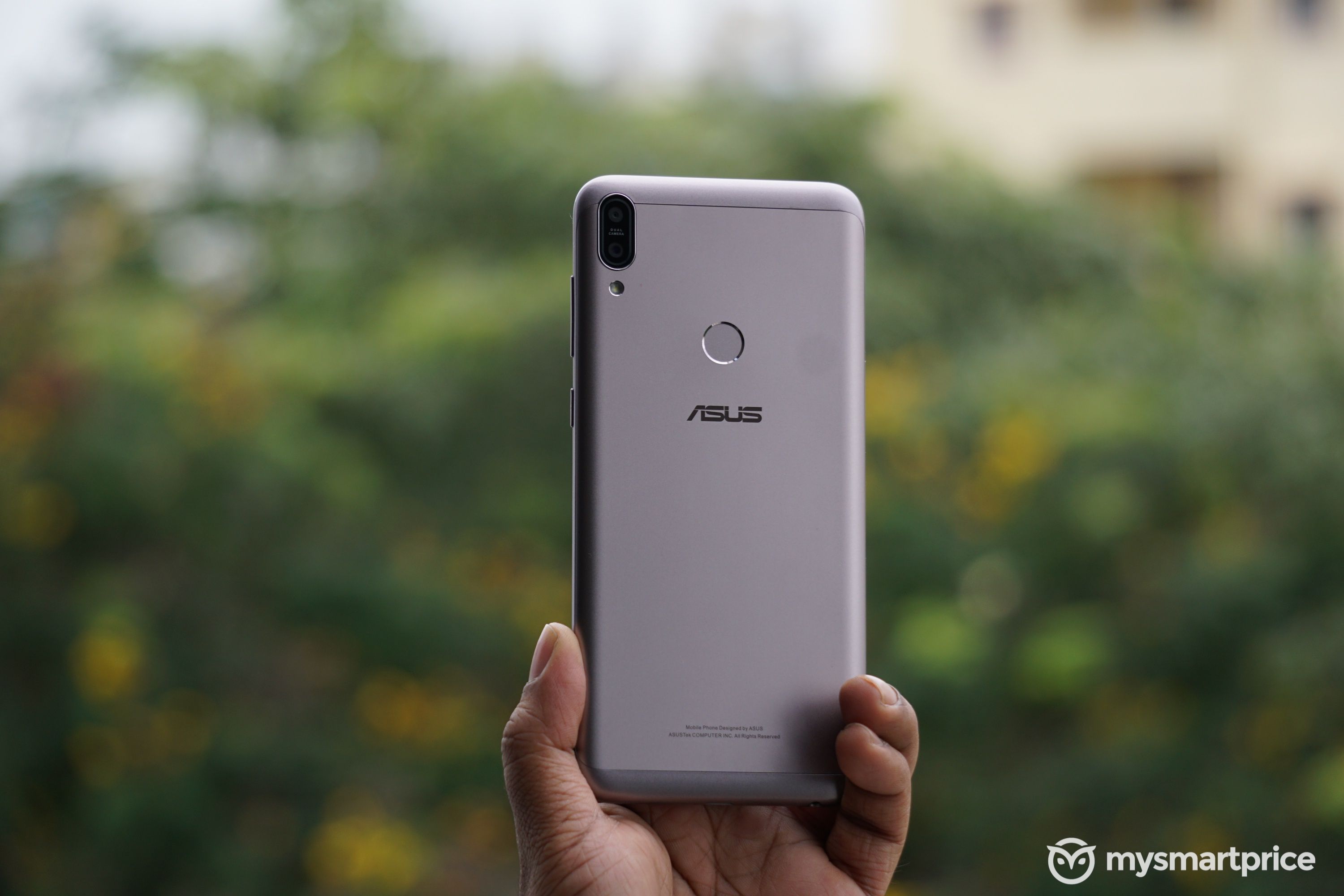
If you are planning to buy a budget smartphone right now here in India, the Zenfone Max Pro and the Redmi Note 5 Pro are probably the two best options out there. The Zenfone Max Pro, however, is still the value for money option with its incredible Rs.14,999 price tag for the 6GB version. The equivalent Redmi Note 5 Pro version is Rs.2,000 dearer at Rs.16,999. However, if imaging is of prime concern to you, you might as well opt for the 4GB version of the RN5 Pro that sells for the same price as the 6GB version of the Max Pro (M1). If you are not really keen on getting the best camera quality and would be happier with a stock Android experience and excellent performance to boot, you can get the 4GB version of the Zenfone Max Pro for just Rs.12,999. This version is currently on open sale on Flipkart, unlike the 6GB version that seems to be perennially out of stock. Right now, we think the 4GB version of the Zenfone Max Pro (M1) is the best budget Android smartphone on sale in the country. Our thoughts on the 6GB Max Pro would change, however, once the handset is easily up for grabs.
